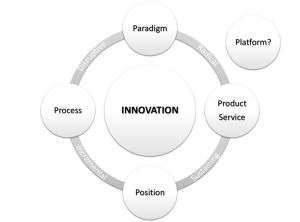Summary
-
Vistry has transitioned from a traditional housebuilding model to a partnership-only model, positioning itself as the UK leader in affordable housing.
-
Labour’s ambitious housing policies — mandatory housing targets, fiscal stimulus, and green/brown belt reallocation — align directly with Vistry’s expertise.
-
Recent cost overruns tied to the legacy housebuilding division have impacted near-term financials, but these issues are isolated and do not affect the partnership business.
-
In-house timber frame production, bulk material purchasing, and economies of scale enhance cost efficiency, supporting long-term profitability and competitive advantages.
Business Overview
Vistry is a UK housebuilder that historically operated under two models: traditional housebuilding and partnerships. About a year ago, the company began phasing out its legacy housebuilding division to focus entirely on partnerships.
In 2024, Vistry expects to deliver around 17,500 homes, significantly ahead of rivals such as Lovell (3,000 homes in 2023) and Keepmoat (4,100 homes in 2023). This scale makes Vistry the clear leader in the affordable housing space.
A useful comparison is the US-based homebuilder $NVR, which pioneered a capital-light approach. Interestingly, a former board member of NVR now sits on Vistry’s board to help guide this strategic shift.
The transition has freed up capital, allowing Vistry to return £1 billion to shareholders (with £200m already completed) and reduce debt by £300m. Management further anticipates ongoing capital returns of around 50% of operating income, potentially reaching NVR-style buyback levels in the medium term.
Historical Timeline
-
2019: Vistry formed through the merger of Bovis Homes and Galliford Try’s housing division. Greg Fitzgerald, ex-CEO of Galliford Try, returned from retirement to lead.
-
2020–2021: Bovis recovered under Fitzgerald’s leadership and acquired Galliford Try’s housing division.
-
2022: Vistry merged with Countryside Partnerships, a pioneer in the partnership model with industry-leading returns.
-
2023: Management exceeded merger-related cost savings and announced a shift to a partnership-only strategy.
-
2024: Legacy housebuilding business continues to be wound down, releasing ~£1bn in capital.
Partnership Model
Unlike traditional housebuilding, Vistry’s partnership model involves collaborating with housing associations, local authorities, and private rental sector (PRS) investors.
Key Structures of Partnerships
-
Development-Led JV: Developer and local authority share land and profits.
-
Investor-Led JV: Long-term investors (e.g., pension funds) fund development; councils lease homes back.
-
Limited Liability JV: Project-based structures with councils and developers sharing ownership or selling assets post-completion.
This approach reduces risk, accelerates timelines, and aligns incentives across stakeholders.
Return on Capital & Competitive Advantage
-
Traditional housebuilding is capital-intensive and slow.
-
Partnerships often involve pre-sold homes, donated land, or forward funding, creating a capital-efficient model.
-
In 2023, Vistry’s overall ROCE was 21%, weighed down by legacy businesses. The partnership model alone delivered ~40% ROCE, with management targeting 40% overall by 2028.
-
By 2026, Vistry’s in-house timber frame production will support 12,000 units annually, driving further efficiency.
Vistry also enjoys a strong reputation, especially through its Countryside brand, making it the preferred partner for local authorities.
UK Housing Economics
The UK faces a severe housing shortage:
-
Government estimates suggest 300,000 new homes/year are required.
-
Other studies indicate the true figure may be 340,000–500,000 homes/year.
-
Current supply is just 234,000 homes/year, creating a backlog of 4.3 million missing homes.
Labour Government’s Housing Agenda
-
1.5 million homes over 5 years (300,000/year).
-
Mandatory local housing targets.
-
Green belt reallocation (50% affordable housing requirement).
-
Expanded brownfield definition.
-
£500m boost to the Affordable Homes Program (AHP).
This environment heavily favors Vistry’s partnership-led model.
Cost Overruns
In October 2024, Vistry disclosed £115m of understated costs across nine legacy sites. A further £50m was later uncovered, all confined to the South division of the legacy business.
-
Stock fell from £13 → £6.3 despite confirmation the issues were isolated.
-
Profit outlook for FY24 was cut from £350m → £300m.
-
Independent reviews attributed issues to poor mid-level management, now replaced.
-
Importantly, no issues were found in the partnerships business.
Insiders responded with significant share purchases, including CEO Greg Fitzgerald (£200k), independent directors, and largest shareholder Browning West (~£11m additional stake).
Valuation
A conservative discounted cash flow (DCF) model was used:
-
Growth: 2% (vs. management’s 5–8% guidance).
-
Terminal growth: 1%.
-
EBITDA margin: 8.7%–11.5%.
-
Working capital: -2% of sales (vs. historical -9% to -10%).
-
WACC: 11.93%.
Result
-
DCF valuation: £10.60/share.
-
Upside: ~70% from current levels (£6.3).
Despite conservative assumptions, Vistry’s valuation indicates a strong margin of safety and significant upside potential.
Conclusion
Vistry’s transformation into a pure-play partnership business makes it the clear leader in the UK affordable housing sector. While near-term challenges from legacy cost overruns weigh on sentiment, these are isolated and do not impact the core partnership model.
With strong government support, capital efficiency, economies of scale, and institutional trust, Vistry is positioned to deliver sustainable growth, high returns, and attractive shareholder value over the coming years.






